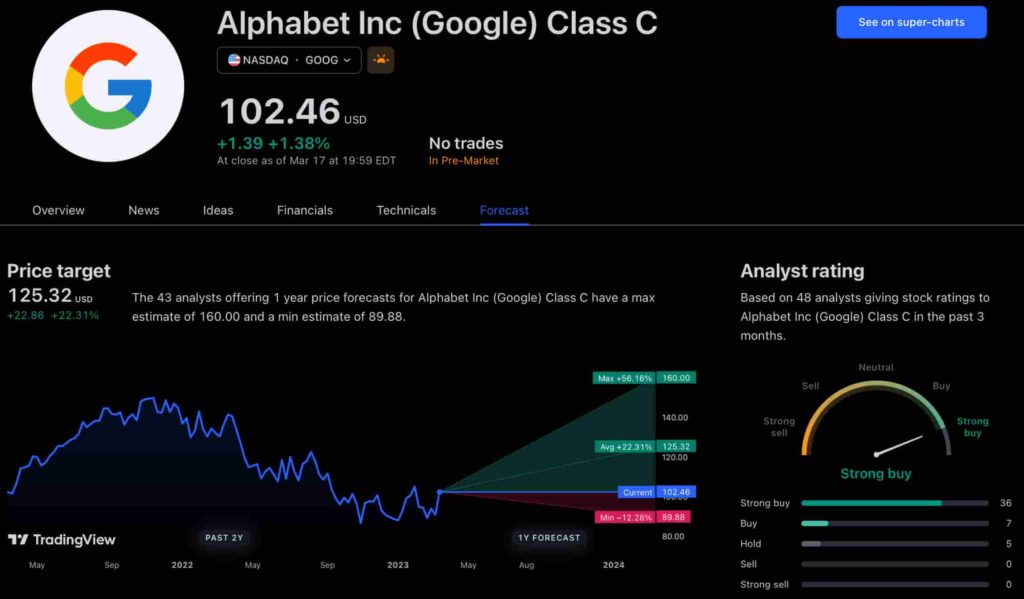The new app is called watchGPT and as I tipped off already, it gives you access to ChatGPT from your Apple Watch. Now the $10,000 question (or more accurately the $3.99 question, as that is the one-time cost of the app) is why having ChatGPT on your wrist is remotely necessary, so let’s dive into what exactly the app can do.
NEWS
8 Red Flags to Look Out for in the Interview Process
Everyone knows that interviews can be a very stressful experience. You have worked really hard to get to this stage and it can be easy to turn a blind eye to many of the red flags that the interviewer or company is displaying. It is very important to take this opportunity to interview your potential employer as well, not just allow them to ask all of the questions. The end goal of your career search should be getting hired by an employer in a role that fits you best. As you make your way through various interview processes, here are 8 red flags to watch out for that signal this may not be the best employer for you:
1. They don’t get you an answer to all of your questions or don’t let you ask any questions in the interview.
Interviewing is a two-way street and should be treated that way. You should always have the opportunity to interview your potential employer so that you can make sure whether it is the right fit for you. All interviewers should make time for questions at the end of each interview, and if time runs over, offer the opportunity to ask questions over email. You should never be left with questions throughout each step of the interview process and especially when you are facing that potential offer letter. If you haven’t gotten an answer to one of your questions, don’t sign the offer letter until you do. You should feel comfortable with the potential employer as you advance throughout the process. If you don’t feel comfortable, it may be time to walk away from the interview process.
2. They ask you about your salary history.
In some states, this is even illegal! Employers shouldn’t ask about your salary history as it shouldn’t have any relevance to the role that you are applying. Each employer should have a salary range in mind for each role to ensure that they are keeping to their own budget and also to make sure that they are paying employees equally relative to their different experience levels. I would make sure that you have your own acceptable salary range in mind, including all of the benefit variables as well, but don’t hesitate to redirect these questions towards what you are wanting from the new role.
3. The interviewer seems disengaged or not paying attention.
Have you ever been in an interview where it seems like the interviewer is only partially there? That is definitely a major red flag! Employers should take you and your time seriously and also the hiring process in general. Hiring is a major investment for all employers and not treating it as such can be a big mistake. Your interviewer should be present with you and treat you as one of the most important parts of their day (because you should be)! You are taking time away from your current role, job search time, or the many other things you could be doing
4. They don’t give you a timeline to hear back.
An employer should always give you a timeline to hear back especially after you have spent time on them by interviewing whether on the phone or in person. They should give you some idea of when you should hear back from them. They should then follow up with you in that time period, whether it is with no news or some news. Your potential employer should always be timely with their follow up responses. Employers should value your time and also try to ease any questions of when you will receive an answer of continuing the interview process.
5. They should always outline next steps and be transparent with you!
At the beginning of the process or after your first few steps, the potential employer should outline the interviewing steps to come as well as the timeline they are looking to hire in. All employers should have their interview process built out prior to candidates entering the picture. If they don’t, that should be a concerning sign as they haven’t thought through all of the pieces required to find the best person for their role. Most employers should have a rough idea of when they are looking to hire their open roles and they should be forthcoming with that information to you. You wouldn’t want to be waiting around for weeks or even months without any idea of when the final steps of the interview process will be. They should also let you know where you are at in the process, whether they are two more interviews to go through or a potential position assessment. The interview process should be communicated with you and you should have an idea of what is to come!
6. They don’t treat you like a human.
All employers are human and they should also treat you with the same respect. There are many different activities going on in everyone’s lives at once so employers should be flexible with how and when they are scheduled. If you are sick, please cancel your interview. You want to be able to bring your best self into the interview and it is very hard to do so when you are sick. If your potential employer isn’t okay with canceling the interview process, then that is a huge red flag. Please keep in mind that you should be as transparent and upfront as possible communicating your needs as soon as possible. If you are transparent and upfront, employers should be willing to make accommodations when they can.
7. Employers are not able to identify goals to accomplish for the new role.
Any employer should be able to tell you what goals that the role is working towards within their first 90 days and beyond. These goals help set the expectations for you once you would start in that role and it can be hard to start working somewhere without knowledge of these starting points. It should be a major red flag for you as the interviewee, because if you were to be hired, what are you going to be aiming at doing? These goals also help determine how your performance will be measured. How will you know how well you’re performing without something to measure it against? Without these goals, it is hard to imagine what an employer’s onboarding process would be like.
8. You are not interviewed by a variety of your potential team members.
This is your time to get to know your potential workplace and potential new team members. Employers should incorporate potential peers for this role into the interview to not only give you an idea of who works there, but it also gives them the opportunity to get to know you as well. As mentioned, interviewing is a two-way street. If employers don’t include your peers in the interview process, how are you supposed to get a good idea of the workplace culture and also a good idea of what your potential new team works on? I would include this as a flag because if they are not including their team into the hiring process, you have to wonder why they are avoiding introducing you to potential teammates.
Final Thoughts
You should be taking notes throughout the interview process and be on the lookout for warning signs that the company you are interviewing with may not be the best fit. Like I said before, interviewing is a two-way street and it allows you the opportunity to get a sneak peek of what it is like within the company that you are interviewing with and also what it would be like to work in the role. It can be difficult to switch roles, careers, or even just to start your career in a role that the company is not transparent with you throughout the interview process. These decisions are not made lightly. If you see any of these red flags, it may be time to end the interview process with that company. If you do end up turning a blind eye to these red flags, you may end up regretting your decision later, once you have spent a few months at your new employer.
Are you currently searching for a new job in digital marketing? Check out the PPC Hero Job Board for open positions around the country.
Facebook Faces Yet Another Outage: Platform Encounters Technical Issues Again

Uppdated: It seems that today’s issues with Facebook haven’t affected as many users as the last time. A smaller group of people appears to be impacted this time around, which is a relief compared to the larger incident before. Nevertheless, it’s still frustrating for those affected, and hopefully, the issues will be resolved soon by the Facebook team.
Facebook had another problem today (March 20, 2024). According to Downdetector, a website that shows when other websites are not working, many people had trouble using Facebook.
This isn’t the first time Facebook has had issues. Just a little while ago, there was another problem that stopped people from using the site. Today, when people tried to use Facebook, it didn’t work like it should. People couldn’t see their friends’ posts, and sometimes the website wouldn’t even load.
Downdetector, which watches out for problems on websites, showed that lots of people were having trouble with Facebook. People from all over the world said they couldn’t use the site, and they were not happy about it.
When websites like Facebook have problems, it affects a lot of people. It’s not just about not being able to see posts or chat with friends. It can also impact businesses that use Facebook to reach customers.
Since Facebook owns Messenger and Instagram, the problems with Facebook also meant that people had trouble using these apps. It made the situation even more frustrating for many users, who rely on these apps to stay connected with others.
During this recent problem, one thing is obvious: the internet is always changing, and even big websites like Facebook can have problems. While people wait for Facebook to fix the issue, it shows us how easily things online can go wrong. It’s a good reminder that we should have backup plans for staying connected online, just in case something like this happens again.
NEWS
We asked ChatGPT what will be Google (GOOG) stock price for 2030

Investors who have invested in Alphabet Inc. (NASDAQ: GOOG) stock have reaped significant benefits from the company’s robust financial performance over the last five years. Google’s dominance in the online advertising market has been a key driver of the company’s consistent revenue growth and impressive profit margins.
In addition, Google has expanded its operations into related fields such as cloud computing and artificial intelligence. These areas show great promise as future growth drivers, making them increasingly attractive to investors. Notably, Alphabet’s stock price has been rising due to investor interest in the company’s recent initiatives in the fast-developing field of artificial intelligence (AI), adding generative AI features to Gmail and Google Docs.
However, when it comes to predicting the future pricing of a corporation like Google, there are many factors to consider. With this in mind, Finbold turned to the artificial intelligence tool ChatGPT to suggest a likely pricing range for GOOG stock by 2030. Although the tool was unable to give a definitive price range, it did note the following:
“Over the long term, Google has a track record of strong financial performance and has shown an ability to adapt to changing market conditions. As such, it’s reasonable to expect that Google’s stock price may continue to appreciate over time.”
GOOG stock price prediction
While attempting to estimate the price range of future transactions, it is essential to consider a variety of measures in addition to the AI chat tool, which includes deep learning algorithms and stock market experts.
Finbold collected forecasts provided by CoinPriceForecast, a finance prediction tool that utilizes machine self-learning technology, to anticipate Google stock price by the end of 2030 to compare with ChatGPT’s projection.
According to the most recent long-term estimate, which Finbold obtained on March 20, the price of Google will rise beyond $200 in 2030 and touch $247 by the end of the year, which would indicate a 141% gain from today to the end of the year.
Google has been assigned a recommendation of ‘strong buy’ by the majority of analysts working on Wall Street for a more near-term time frame. Significantly, 36 analysts of the 48 have recommended a “strong buy,” while seven people have advocated a “buy.” The remaining five analysts had given a ‘hold’ rating.

The average price projection for Alphabet stock over the last three months has been $125.32; this objective represents a 22.31% upside from its current price. It’s interesting to note that the maximum price forecast for the next year is $160, representing a gain of 56.16% from the stock’s current price of $102.46.
While the outlook for Google stock may be positive, it’s important to keep in mind that some potential challenges and risks could impact its performance, including competition from ChatGPT itself, which could affect Google’s price.
Disclaimer: The content on this site should not be considered investment advice. Investing is speculative. When investing, your capital is at risk.
NEWS
This Apple Watch app brings ChatGPT to your wrist — here’s why you want it

ChatGPT feels like it is everywhere at the moment; the AI-powered tool is rapidly starting to feel like internet connected home devices where you are left wondering if your flower pot really needed Bluetooth. However, after hearing about a new Apple Watch app that brings ChatGPT to your favorite wrist computer, I’m actually convinced this one is worth checking out.
-

 PPC6 days ago
PPC6 days ago19 Best SEO Tools in 2024 (For Every Use Case)
-
SEARCHENGINES5 days ago
Daily Search Forum Recap: April 19, 2024
-
SEARCHENGINES6 days ago
Daily Search Forum Recap: April 18, 2024
-

 MARKETING6 days ago
MARKETING6 days agoEcommerce evolution: Blurring the lines between B2B and B2C
-

 WORDPRESS5 days ago
WORDPRESS5 days agoHow to Make $5000 of Passive Income Every Month in WordPress
-

 SEO6 days ago
SEO6 days ago2024 WordPress Vulnerability Report Shows Errors Sites Keep Making
-

 WORDPRESS6 days ago
WORDPRESS6 days ago10 Amazing WordPress Design Resouces – WordPress.com News
-
WORDPRESS7 days ago
[GET] The7 Website And Ecommerce Builder For WordPress













